China's anti-aircraft missile forces
On arms SAM troops PRC PLA is 110-120 air defense systems (divisions) HQ-2, HQ-61, HQ-7, HQ-9, HQ-12, HQ-16, C-300PMU, C-300PMU-1 and 2, for a total of about 700 PU. By this indicator, China is second only to our country (around 1500 PU). However, at least one third of this number of Chinese air defense missile systems falls on obsolete HQ-2 (an analogue of the C-75 air defense system), which are being actively replaced.
The first air defense missile systems were delivered to China from the USSR at the end of the 1950s. It was then that the foundations were laid for the development of military-technical cooperation between the USSR and the PRC, the main purpose of which was to create a modern scientific and technical base in the PRC with the assistance of the USSR capable of producing and improving various types of weapons and military equipment.
In October, 1957 was held in Moscow, the Soviet-Chinese meeting on military-technical cooperation, which resulted in an agreement was signed on the transfer of licenses to China to manufacture various types of rocket weapons technical documentation, as well as a number of the latest defense technologies. In addition, supplies to the PRC of some types of missile weapons were started, including aviation, tactical and anti-aircraft missiles. The role of the latter especially increased in connection with the outbreak of the Taiwan crisis at the end of August 1958. The large-scale deliveries of American weapons to Taiwan made in those years significantly strengthened the army of this state. Aviation of Taiwan received several high-altitude reconnaissance aircraft RB-57D (and soon Lockheed U-2), the characteristics of which significantly exceeded the capabilities of the Chinese air defense systems.
The Americans who were arming Taiwan were not altruistic — the main purpose of the reconnaissance flights that the Taiwanese pilots were to carry out was to obtain the necessary information from the United States about the work on creating nuclear weapons in the PRC.
In the first three months of 1959, the RB-57D made ten hours of flights over the PRC, and in June of the same year, reconnaissance aircraft flew over Beijing twice. The celebration of the 10 anniversary of the founding of the People's Republic of China was approaching, and forecasts of a possible breakdown of anniversary celebrations looked quite realistic.
In this situation, the Chinese leadership appealed to the USSR for delivery to the PRC under the increased secrecy of several of the latest CA-75 Dvina air defense missile systems created in KB-1 (Almaz Scientific and Production Association) under the supervision of A.A. Raspletin. In the spring of 1959, five firefighters and one CA-75 technical division were delivered to the People's Republic of China, including the 62 anti-aircraft missiles 11D, created in the ICB Fakel under the direction of PDGrushin, and the first combat crews of Chinese military personnel. At the same time, a group of Soviet specialists was sent to service these missile systems to China, with whose participation 7 on October 1959, a Taiwanese reconnaissance aircraft RB-57D was shot down near Beijing for the first time.
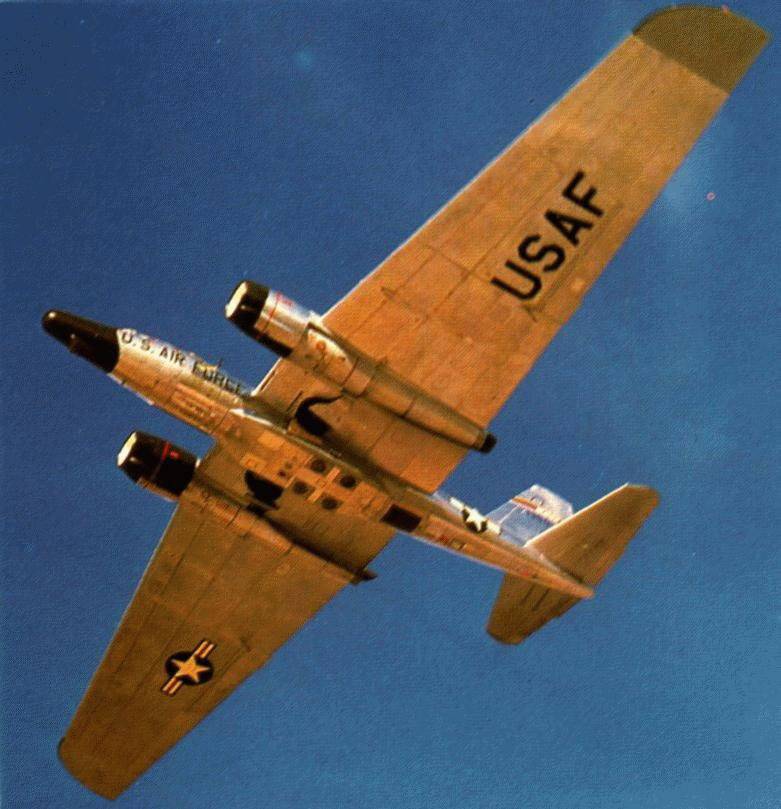
As the study of the fallen debris showed, the high-altitude reconnaissance RB-57D fell apart in the air and its fragments flew several kilometers, and the pilot of the reconnaissance aircraft Van Yingqin was mortally wounded.
It should be noted that this was the first aircraft shot down by an anti-aircraft missile in a combat situation. At the same time, in order to preserve the effect of surprise and to hide the presence of the latest rocket technology in China, the Soviet and Chinese leaders agreed not to report the aircraft that had been shot down. However, the next day, Taiwanese newspapers reported that one of the RB-57D aircraft crashed during a training flight, fell, and sank in the East China Sea. In response, the Chinese Xinhua news agency made the following statement: “In the first half of the day on October 7, one American-based Chiang Kai-shek reconnaissance aircraft of the RB-57D type invaded airspace in northern China and was shot down by the People’s Air Force China's Liberation Army. ” However, analyzing the loss of their high-altitude reconnaissance aircraft over China, the Americans did not deduct this result to the account of the Soviet anti-aircraft missiles. Especially stunning was the event for them that happened on 1 in May of 1960, when, in the Sverdlovsk region, the U-2, previously unattainable, was smitten with a Soviet anti-aircraft missile.
In total, 5 high-altitude reconnaissance aircraft U-2, shot by Taiwanese pilots, were shot down over the PRC, some of them survived and were captured.
The high combat qualities of Soviet rocket weapons prompted the Chinese leadership to acquire a license for the production of CA-75, (the Chinese name HQ-1 ("Hongzi-1")), about which all necessary agreements were soon reached. However, they began to intensify at the end of the 1950. Soviet-Chinese differences caused 16 in July 1960 of the USSR announced the withdrawal of all military advisers from the People's Republic of China, which was the beginning of the practical collapse of military-technical cooperation between the USSR and the PRC for several subsequent decades.
Under current conditions, further improvement in the PRC of anti-aircraft missile weapons began to be carried out on the basis of the 1960-s declared in the country at the beginning of the XNUMX. self-reliance policies. However, this policy, which became one of the main tenets of the cultural revolution, with regard to the creation of modern types of rocket weapons was ineffective, even after China began to actively poach Chinese specialists who had relevant specialties from abroad, primarily from the United States . In those years, more than a hundred prominent scientists of Chinese nationality returned to the PRC. At the same time, work on the acquisition of advanced technologies in the military-technical field was intensified, and specialists from Germany, Switzerland and a number of other countries began to be invited to work in the PRC.
With their participation in 1965, in the process of mastering the production of HQ-1, the development of its more advanced version under the designation HQ-2 was started. The new air defense missile system was distinguished by an increased range, as well as higher performance when operating in conditions of using electronic countermeasures. The first version of HQ-2 entered service in July, 1967.
In general, in the 1960's. in the People's Republic of China on the basis of the Soviet SA-75, three programs were carried out for the creation and production of air defense missile systems designed to combat high-altitude targets. Among them, along with the above-mentioned HQ-1 and HQ-2, also included HQ-3, specially created to counter reconnaissance flights in the sky of China, the American supersonic high-altitude reconnaissance aircraft SR-71. However, only HQ-2, which in 1970-80-s, received further development. repeatedly modernized in order to maintain its characteristics at a level consistent with the development of means of air attack.
Thus, the work on the first HQ-2 modernization was launched in 1973, and they were based on an analysis of the hostilities in Vietnam. Created as a result of the NQ-2A air defense system, it possessed a number of qualitative innovations and was put into service in 1978.
Soviet experts have repeatedly recorded cases of the loss of samples of aviation and rocket technology during its transportation through the territory of the PRC by rail to Vietnam. Thus, the Chinese, without disdaining banal theft, were given the opportunity to familiarize themselves with modern Soviet developments.
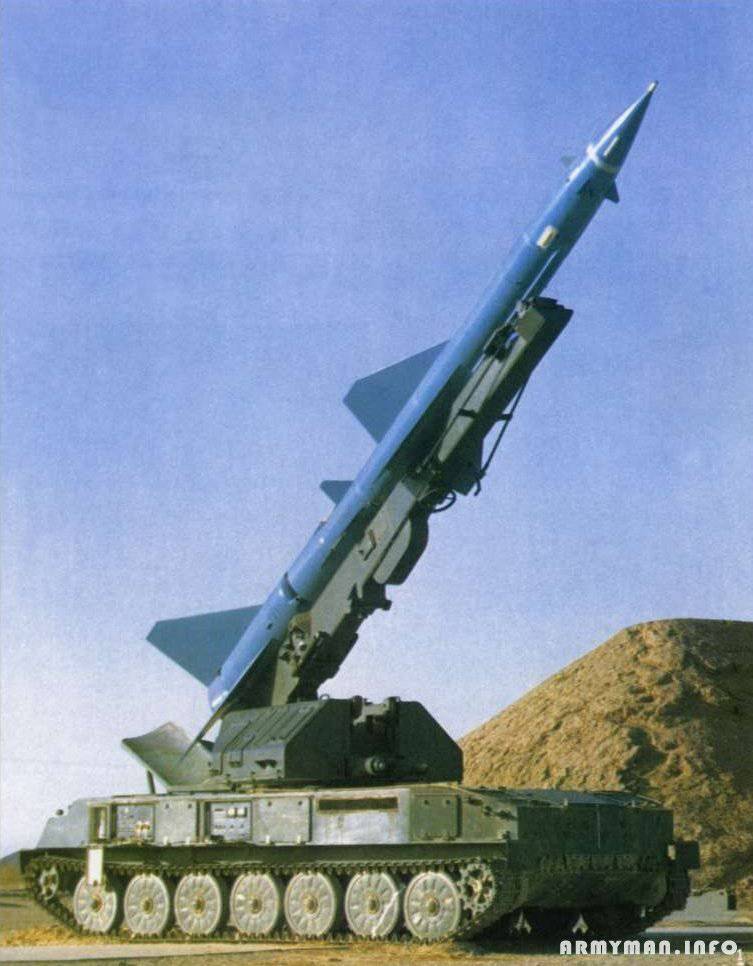
A further development of the HQ-2 was the mobile version of the HQ-2В, work on which was started in 1979. HQ-2В included the use of crawler launchers, as well as a modified rocket equipped with a new radio pickup, the response of which could be adjusted depending on rocket position relative to the target. A new warhead was also created for the rocket with a large number of destructive elements and a main engine with increased thrust. This version of the air defense system was adopted in 1986.
The variant HQ-2J, which was created almost simultaneously with it, was distinguished by the use of a fixed launcher for launching a missile.
The pace of production of different variants of HQ-2 in the 1980-ies. reached about 100 missiles per year, which allowed them to equip anti-aircraft missile battalions around 100, which in those years were the basis of China’s air defense. At the same time, several hundreds of different types of HQ-2 missiles were delivered to Albania, Iran, the DPRK and Pakistan.
This complex is still in service in China and several other countries.
On the basis of the AIM-7 American air-to-air missile AIM-61 that was captured in Vietnam, the HQ-XNUMX air defense system was created.
The creation of this complex was very difficult, because of the 1960 / 70 cultural revolution that began at that time. In fact, the HQ-61 air defense system was the first Chinese project to create this class of equipment. During the design and creation of the system, the lack of experience and scientific potential greatly affected.
The complex itself was not very successful, it was built in limited quantities, and HQ-7 (Chinese version of the French Crotale) was later replaced. But after upgrading the system, an updated version was created called HQ-61A. Today, this complex serves as part of the People’s Liberation Army of China. The main task of the system was to cover the air defense systems of long range.
The creation of the HongQi-7 air defense system began in the 1979 year. The complex, which is a localized copy of the French Crotale air defense system, was developed at the Second Aerospace Academy of the People's Republic of China (now the Chinese Academy of Defense Technologies — China Academy of Defense Technology / CADT).
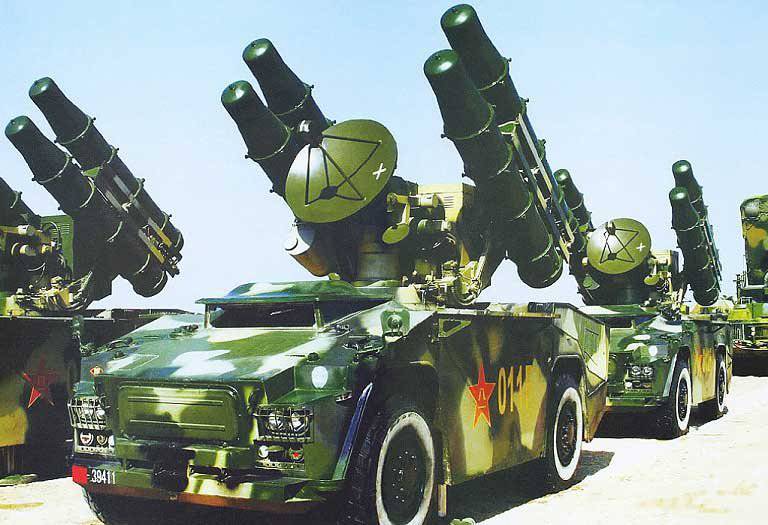
The tests of the complex were carried out from July 1986. to June 1988 Currently, HQ-7 is in service with the ground forces, the Air Force and the Navy of the People’s Liberation Army of China. For the parts of the PLA, a self-propelled version of the complex on a vehicle chassis has been developed; for the Air Force, a towed version, which is used for air defense of airfields and infrastructure facilities.
An upgraded version of the HQ-7B complex (FM-90) is located on an AFV off-road armored chassis with the 6xXNNXX Chinese wheel drive.
Compared with the prototype in the complex HQ-7B used a new dual-band radar guidance instead of single-pulse Type-345. The information processing block is made on ultra-large integrated circuits (developed by the 706 institute). The transition to a fully digital processing of information instead of analog allowed to significantly increase the noise immunity of the complex under active and passive interference.
A thermal imager was integrated into the optoelectronic tracking system to ensure firing at night; the complex is equipped with a radio communication system that provides information exchange between the command post and launchers similar to the Crotale “4000 series” air defense system.
In the rocket engine, an improved charge of solid fuel was used, which ensured a significant increase in the flight range, and the fuse and control system equipment were upgraded.
The development of another “clone” rocket for the HQ-64 SAMs (export name LY-60), this time based on the Italian Aspire rocket, was launched at the end of the 1980s. At that time, China and Italy were negotiating to start production of this missile in the PRC on a license basis. However, after the Beijing events of the spring-summer 1989, the Italians refused to cooperate with China, but apparently the materials obtained earlier were enough to begin and bring the next development to completion.
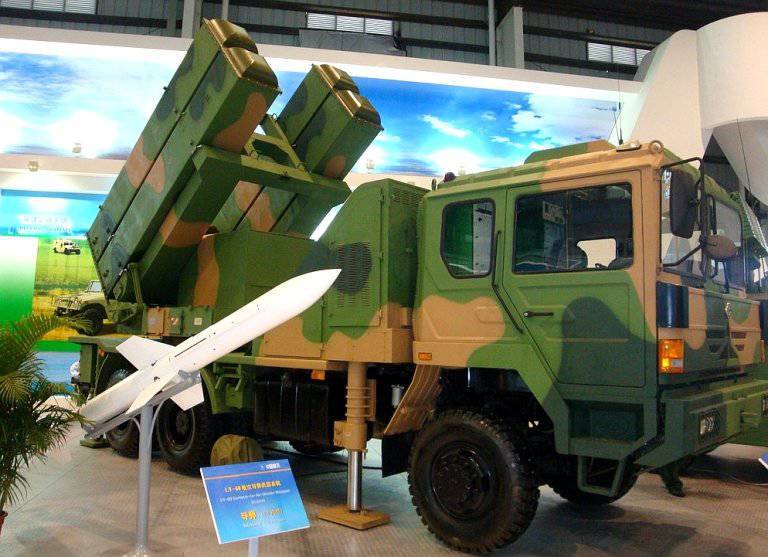
In recent years, an increase in the characteristics of Chinese air defense systems has been largely associated with the acquisition by the PRC of a limited number of Russian S-XNUMPPMU air defense systems and self-propelled Tor systems. So, in 300's. The People's Republic of China acquired four S-XNUMPPMU air defense missiles and about 1990 anti-aircraft missiles for them, as well as several dozen Tor systems, mainly intended to compensate for the existing deficiencies in the country's air defense system. The successful development of the C-300 in the Chinese army and the satisfaction of the Chinese leadership with the high combat and operational qualities of this system were the main motivations for acquiring Russia in 100-300. its more advanced version of the C-XNUMPPMU-2002 SAM.
Having familiarized with the ZRK received from Russia, in the People's Republic of China began work on creating systems of its own production. On the basis of the technical solutions of the Russian C-300 air defense missile system, at the end of 90, the Chinese long-range anti-aircraft missile system HQ-9 (HongQi-9, Hongzi-9, Red Banner-9) was created, the export designation is FD-X 2000). Designed to destroy aircraft, cruise missiles and helicopters of the enemy at all altitudes of their combat use, day and night, in all weather conditions. HQ-9 is the most advanced model of the third generation of anti-aircraft missile systems of China’s air defense and is characterized by high combat effectiveness in a difficult jamming environment, including with the massive use by the enemy of various means of air attack.
Currently in production is a modernized version of the complex, designated HQ-9A. HQ-9A is distinguished by increased combat performance and efficiency, especially in terms of anti-missile capabilities achieved through improved electronic equipment and software.
The development of medium-range air defense missile systems, led to the creation of HQ-12 (HongQi-12, "Hongzi-12", "Red Banner-12").
The HQ-12 complex was developed by the Chinese company Jiangnan Space Industry, also known as the 061 base. The development of the prototype complex began as early as the beginning of the 80s of the last century, as a replacement for the obsolete HQ-2 air defense systems (Chinese copy of the Soviet C-75 air defense systems). The transportable version of the complex under the designation KS-1 was released for testing in 1989. and was first demonstrated at the Paris Airshow at 1991. The development of the KS-1 SAM system was completed in 1994.
Failures in testing the new KS-1A complex slowed down its adoption. In July-August 2007, when the PLA celebrated the 80 anniversary of the PLA, the new ZRK as part of the mobile launcher and H-200 radar was publicly displayed in the Chinese Military Museum of the Revolution, under the designation HQ-12, which suggests its possible adoption to the armament of the PLA. Multiple HQ-12 batteries in 2009. participated in the military parade dedicated to the 60 anniversary of the PRC.
It seems that the most successful was the new Chinese medium-range air defense system HQ-16 (Hongzi-16). It is a “conglomerate” of technical solutions borrowed from Russian C-300P and Buk-M2. In contrast to the "Buk", in the Chinese air defense system used "hot - vertical" start.
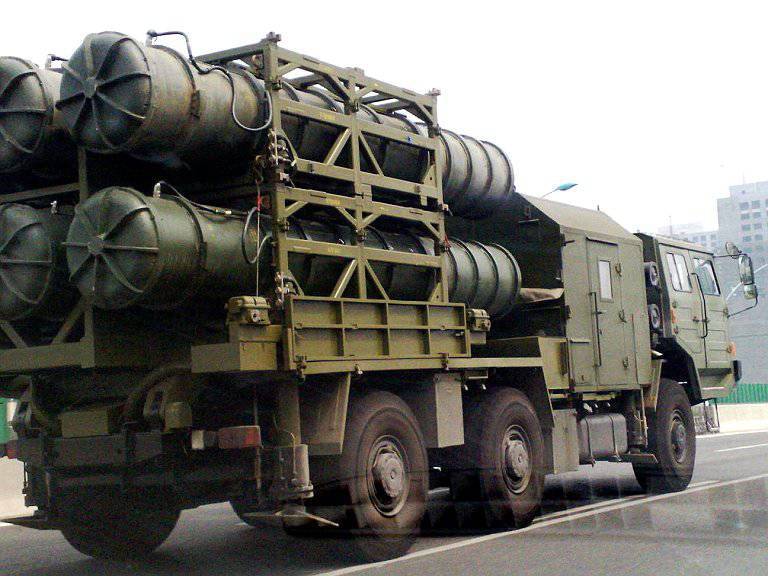
The HQ-16 is equipped with 328 kg anti-aircraft missiles, the firing range is 40 km. Self-propelled PU is equipped with 4-6 missiles in transport and launch containers. The complex's radar is capable of detecting air targets at a distance of 150 km. Elements of the air defense missile system are placed on six-axle off-road vehicles.
The complex is capable of striking military, tactical and strategic aviation aircraft, fire support helicopters, cruise missiles and remotely piloted aircraft. Provides an effective reflection of the massed raids of modern air attack in the conditions of intensive electronic suppression. He is able to perform a combat mission in various weather conditions. LY-80 is multichannel. Its fire weapons can fire up to six targets simultaneously, aiming at each of them up to four missiles from one launcher. The target attack zone is circular in azimuth.
As can be seen from all of the above, the People's Republic of China pays great attention to the creation and improvement of modern air defense systems. At the same time, according to most experts, the capabilities of Chinese air defenses against most types of modern air targets, including cruise missiles, remain very limited. In accordance with the materials of the special reports on the military potential of the PRC, which are prepared annually by the US Department of Defense, the PRC also currently does not have a universal integrated national air defense system, and the existing ground-based air defense systems are able to provide only the solution of target air defense tasks. Also, China has only an elementary tactical integrated air defense system. In this case, as a rule, it is noted that an effective air defense system can be deployed in the PRC only by 2020 year.
Based on:
http://geimint.blogspot.ru/search/label/China
http://www.sinodefence.com/
http://china-pla.blogspot.ru/
http://pvo.guns.ru/other/china/clones.htm
http://www.waronline.org/forum/viewtopic.php?t=23695
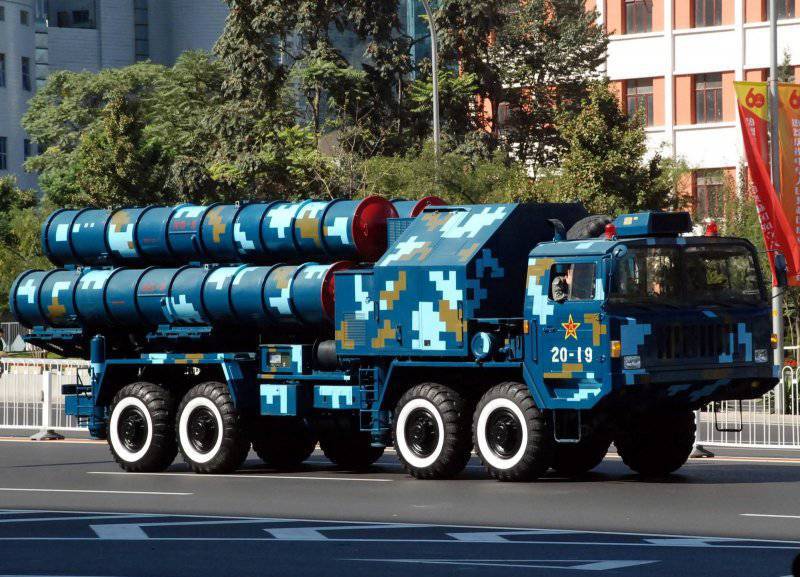
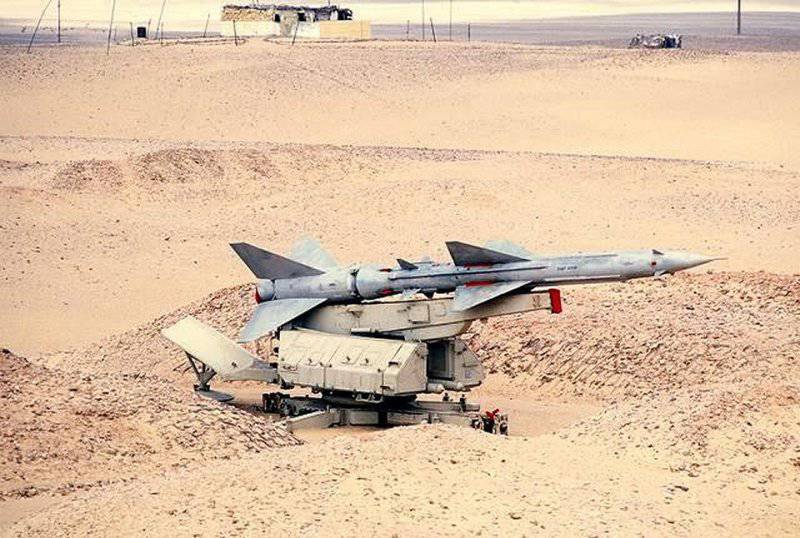

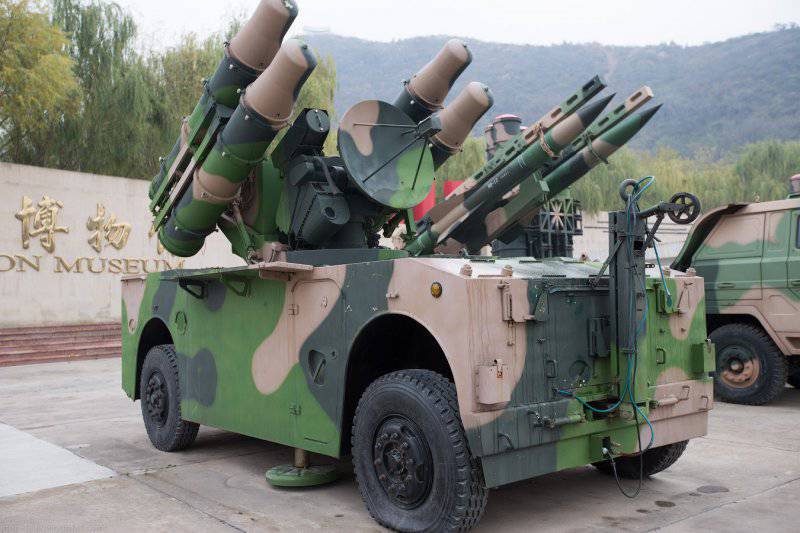
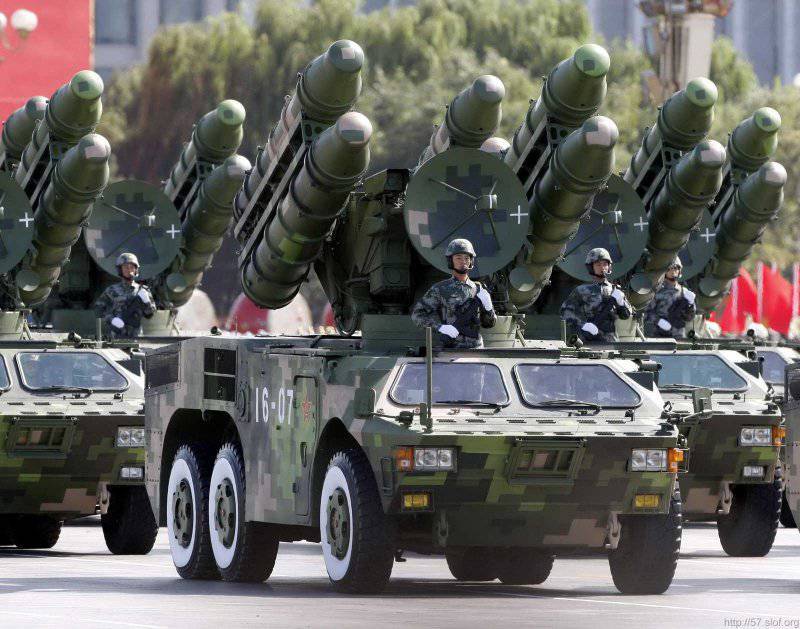
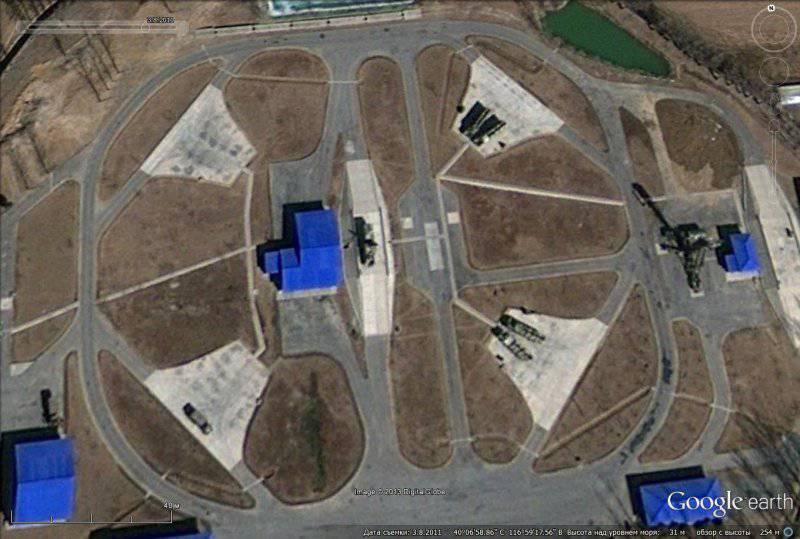
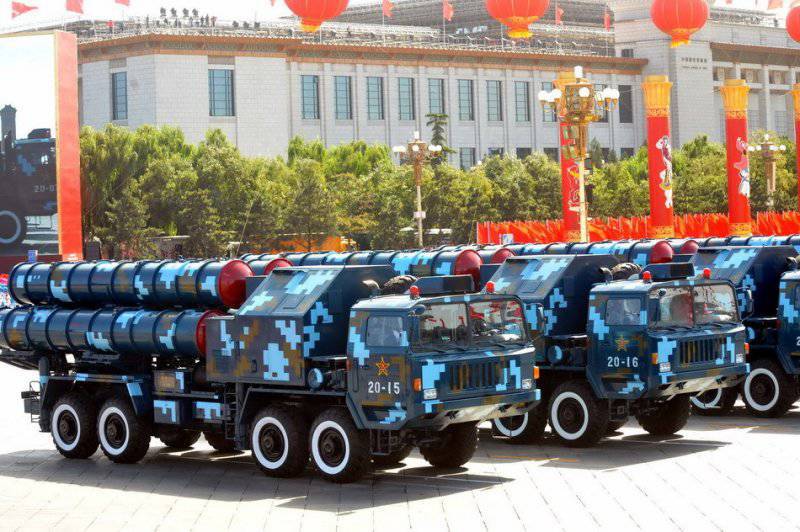

Information